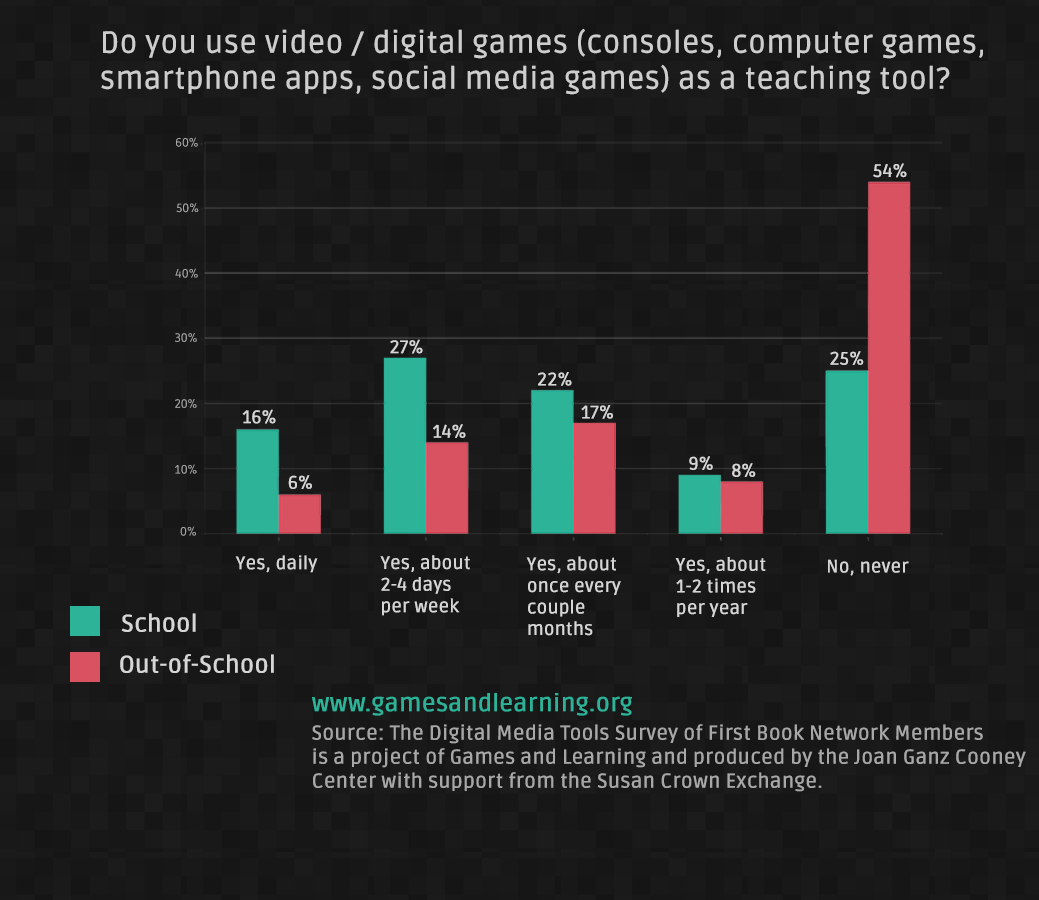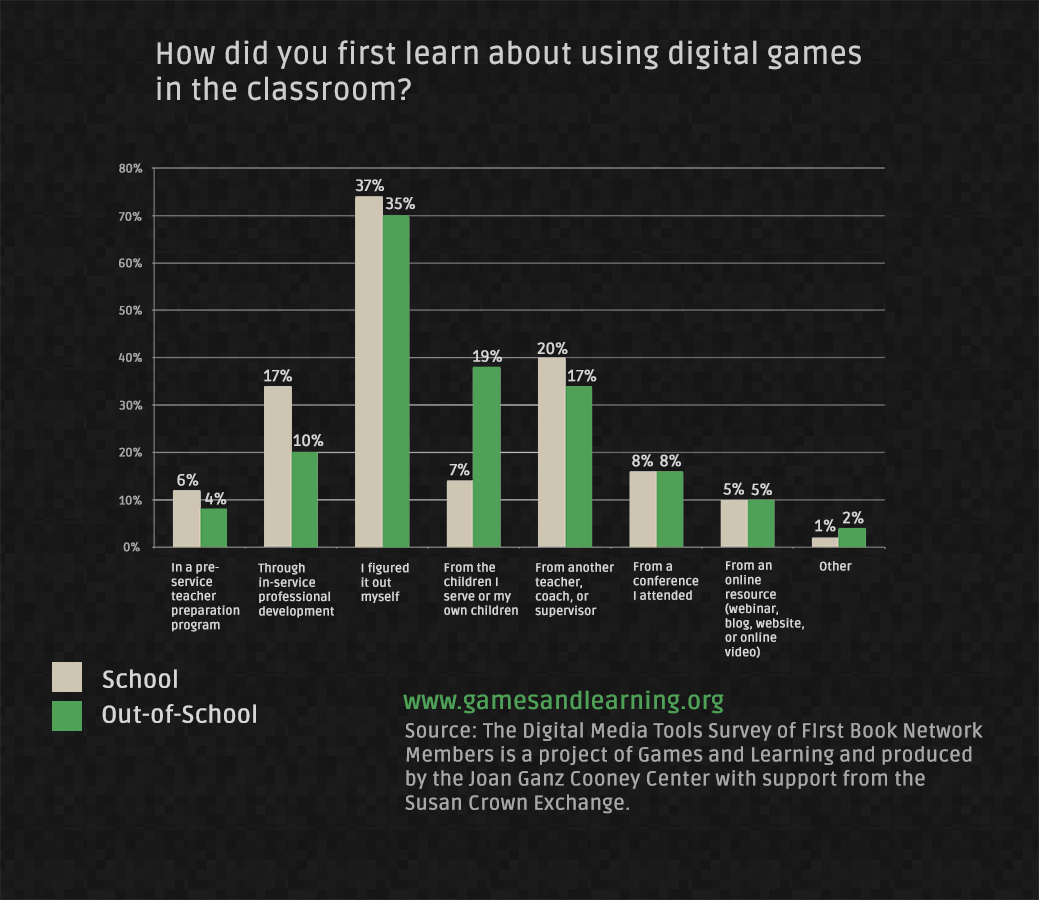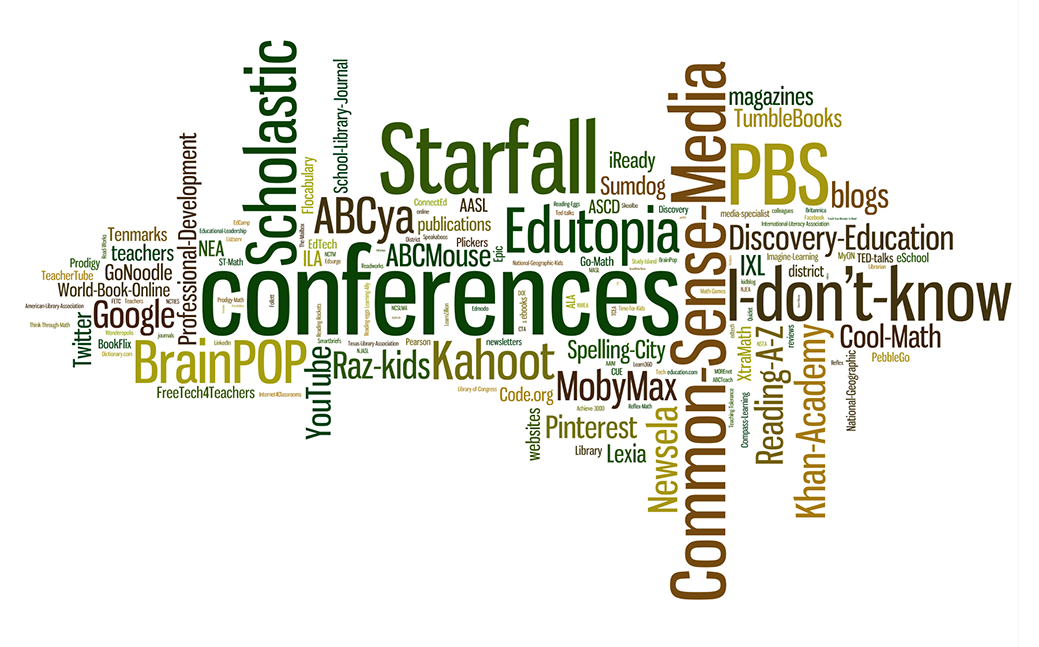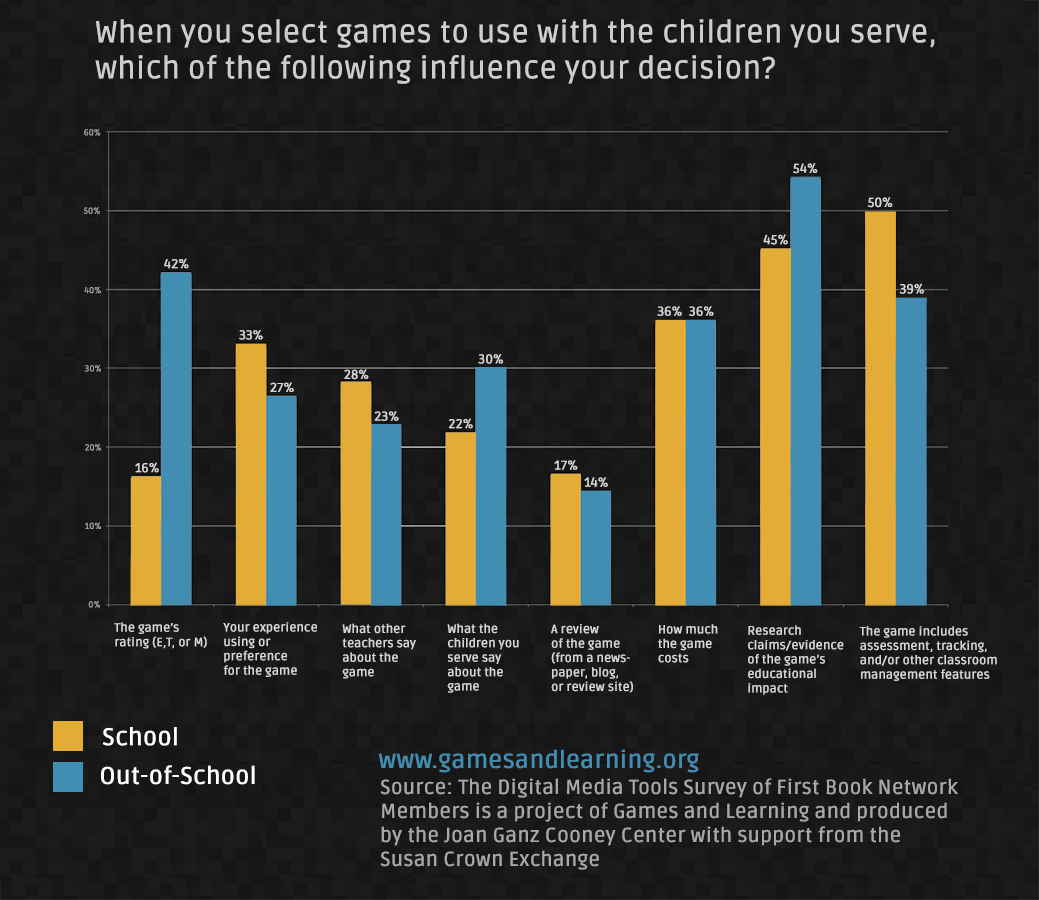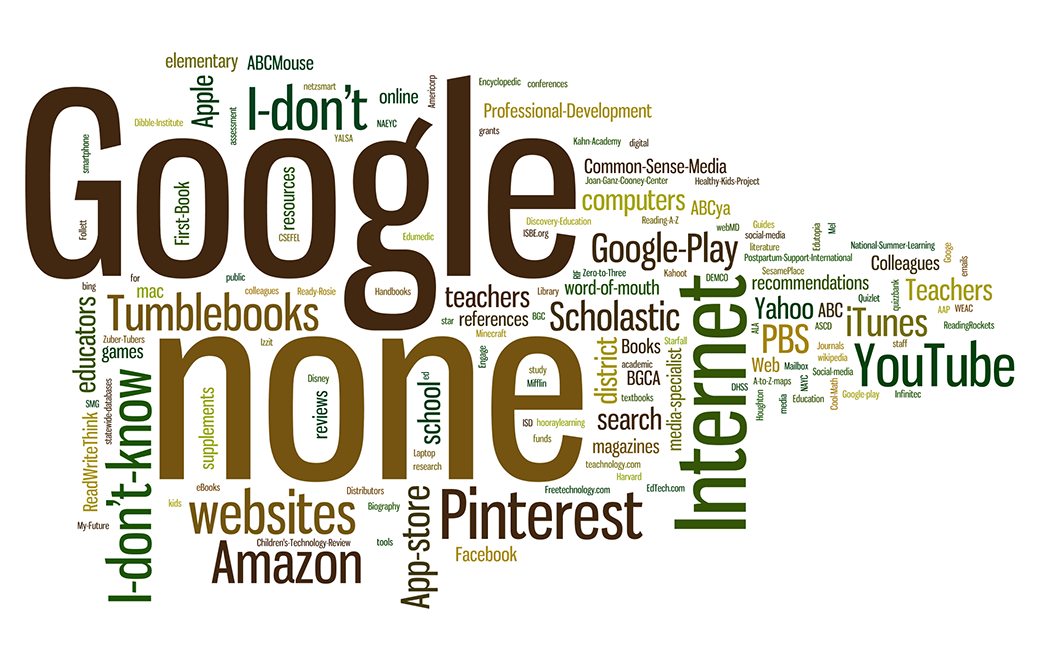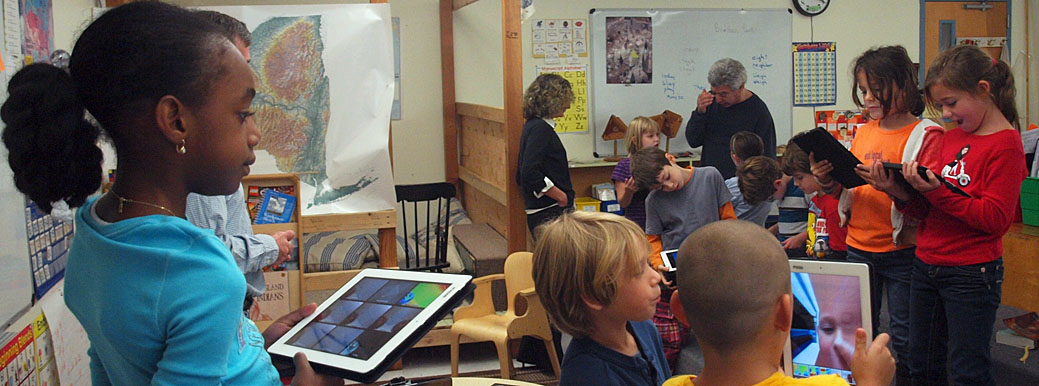
Introduction
A new survey of teachers and after-school program instructors finds that most come to use digital games through their own initiative or because of a colleague who connects them to the game. The findings highlight the degree to which educators still lack training and resources for finding and using games in the classroom.
The results are part of a survey conducted by the Joan Ganz Cooney Center of educators registered with First Book, the non-profit that provides free and low-cost books and educational resources to schools and programs serving children in need.
Earlier survey work had highlighted the spotty infrastructure issues – like high-speed Internet and older computers – as well as training challenges for these groups and so we returned to the First Book audiences to explore their use of digital games more directly. The new survey took in feedback from some 1,000 teachers and program officials who serve lower-income children.
Still Not the Norm
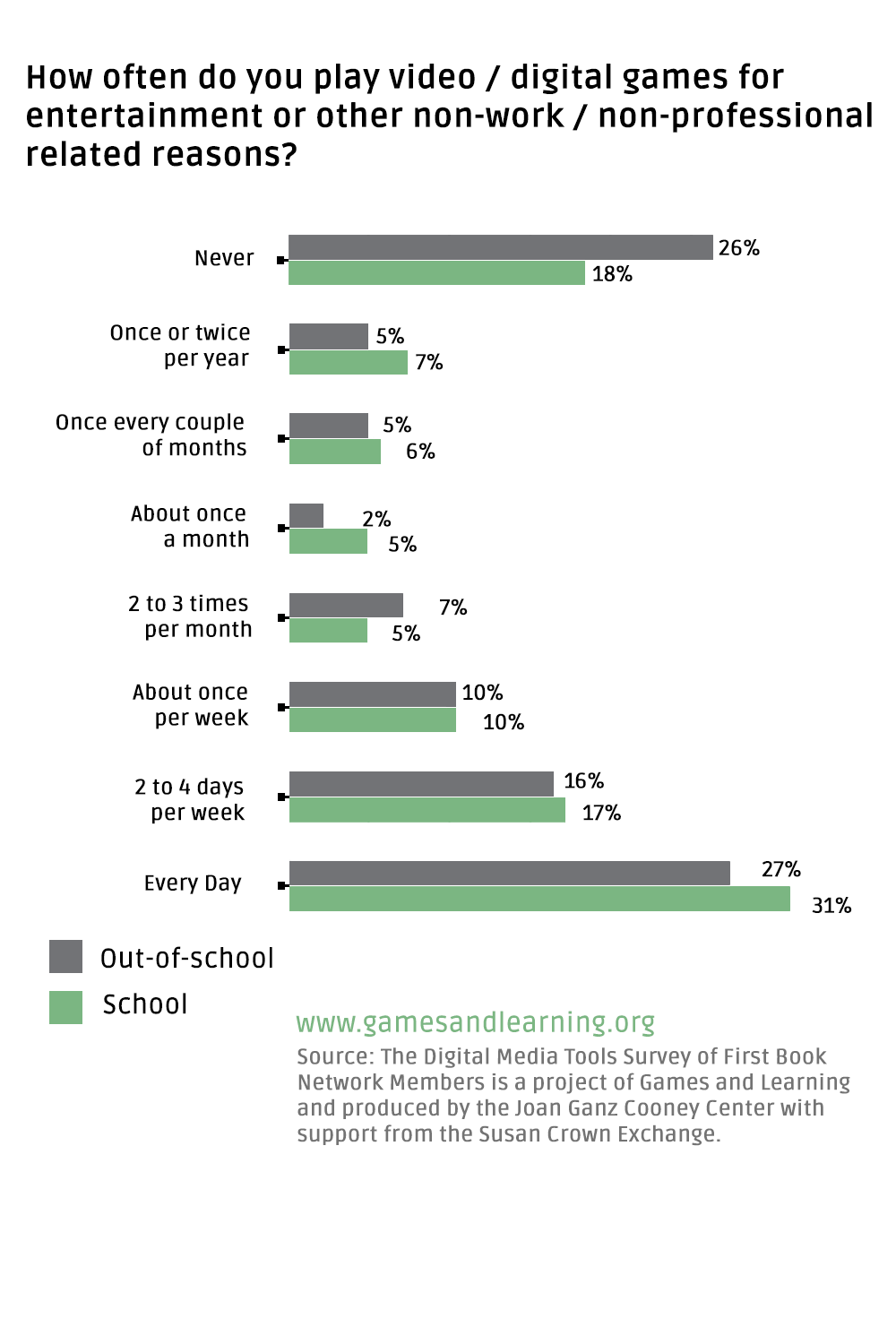
When it comes to the use of digital games, there remain sizable groups of teachers and after-school instructors who use games rarely or never.
Based on earlier interviews with First Book members the reasons for this vary, with many teachers noting that they use games only as a reward for completing their regular work and out-of-school providers noting the lack of infrastructure and training as their major impediments.
Even considering those challenges, it is still striking that 50% of out-of-school instructors and a quarter of the teachers report that they never use digital games.
Perhaps most intriguing is that most of these same respondents report playing digital games on their own smartphones, computers or consoles. These are, for the most part, gamers who don’t lack experience with digital games.
And often these teachers still cite the infrastructure of both their school or program and learning games as one of the biggest barriers to wider use.
One teacher noted in the survey, “We recently started a BYOD program however not all students have tablets or smart devices. We have laptops and computers for students to use. Digital content needs to be available on all platforms and not just as apps on smart devices. Our laptops run Windows 7 so they are not running apps either.”
Another said, “As a teacher in an extremely low-income school, I feel left out of great opportunities to share with my students because we do not have access to tools such as smart phones or tablets.”
Alone Together
This personal experience may help inform one of the other striking findings from this latest survey – the degree to which use of digital tools remains a bottom-up affair.
According to the respondents, more than a third of educators figured out how to incorporate games on their own, without formal training or support. The next most significant sources of inspiration were either the kids themselves or fellow teachers.
These teachers turn to a variety of sources for ideas about how to use digital games and other resources in their classroom. Many turn to traditional sources like Scholastic or PBS, while other cite informational sites like Common Sense Media or Edutopia. Still others turn to producers of digital content like ABC Mouse or Starfall for recommendations about how to incorporate these tools.
It speaks to the lack of a common source for those seeking best practices in using digital tools.
What’s Needed
As complex as the task of finding good guides to using digital tools in the classroom is, respondents did offer some interesting insights into what they value when choosing a digital tool, seeking official, objective confirmation of the game’s effectiveness.
Even more than the traditional deciding factor – cost – those who responded cited independent research that support claims of impact and assessment and tracking features as the most important factors in choosing a tool. Although cost was close behind, the educators are looking for evidence of impact either through a study supporting the game or through the assessment of their own kids.
This news should hearten developers who are going the extra mile to test their games or building assessment tools to accompany their work.
Still, that optimism might be tempered by the final finding from this latest survey. One of the common concerns of developers and teachers alike is how those who may want to use these games may find them or find information about them. The App Store and Google Play remain hopelessly flooded with titles, some good, some bad. Some sources like Common Sense Media offer insight into some aspects of a game like age appropriateness, but don’t offer much on the effectiveness of the game play on teaching certain concepts.
And when teachers tell us where they turn to find out more the answer comes back they either Google a search term and hope to find the information they need, or they may stumble across something on social media.
The lack of a central source for information and rankings of games remains one of the major issues plaguing those who hope to serve lower-income kids.
Methodology
This survey was designed by the Joan Ganz Cooney Center and was fielded during a three-week period in March 2016. The survey was sent out to 108,400 members of the First Book Network, which currently numbers more than 245,000 members. The research was made possible by a grant from the Susan Crown Exchange. Some 1,099 First Book Network members responded and of those filling out the survey, 917 worked in formal education and 182 work in out-of-school programs.

